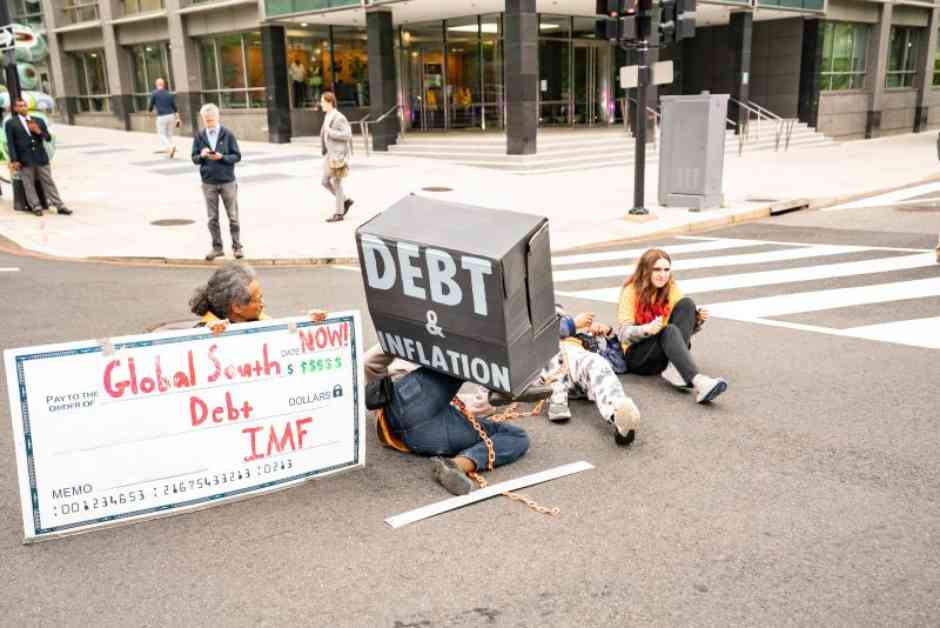So, like, there was this study, right? And it found out that the world’s poorest countries are totally struggling with debt because of all these crazy exchange rate fluctuations and climate disasters. The International Institute for Environment and Development (IIED) did some research and discovered that Least Developed Countries (LDCs) and Small Island Developing States (SIDS) have to borrow money in foreign currencies (usually US dollars) to grow and develop. And then they have to spend, like, billions of dollars every year paying off their debt. Talk about a rough situation, am I right?
These poor countries are super vulnerable to currency changes, especially when extreme weather events wreck their economies. The lead author of the study, Ritu Bharadwaj, explained that every time there’s a climate disaster, these countries have to borrow even more money while their currency loses value. It’s like a double whammy, you know? And since the global economy is all about the US dollar, these countries are stuck dealing with all the risks of currency fluctuations. Not cool, man.
The researchers suggested that international financial institutions should offer loans in local currencies to help out. Plus, they think that debtor nations should be able to swap their existing debt for investments in climate, nature, or social protection. It’s like a whole new approach to dealing with debt, right? Maybe it’ll actually make a difference.
The study looked at 13 countries across Africa, Asia, and the Americas from 1991 to 2022. And get this, over that 31-year period, the value of SIDS currencies dropped by, like, 265% against the US dollar, while LDCs fell by 366%. That’s a massive drop, dude. And because of that, these countries had to pay way more in local currency to repay their debt. It’s a real struggle when all your money is going towards debt instead of important stuff like healthcare and education.
Gaston Browne, the prime minister of Antigua and Barbuda, thinks the study is a wake-up call. He said that repaying debt in foreign currencies during times of crisis drains the economy silently. For every dollar lost to currency depreciation, essential projects like clinics and roads suffer. It’s a tough situation for these countries, man.
In Ghana, things are not looking so great either. Fossil fuel companies have been making bank off multi-billion-dollar oil and gas projects supported by the World Bank. But the people of Ghana are still dealing with power outages, expensive electricity, and rising public debt. It’s like a never-ending cycle of profit for the companies and struggle for the people. Totally unfair, right?
The report from the Centre for Research on Multinational Corporations (SOMO) and ActionAid Ghana exposed how these oil and gas projects, like the Sankofa gas deal and Jubilee oil and gas project, have failed to deliver on their promises. Instead of solving Ghana’s energy crisis, they’ve just caused more problems. It’s a real mess, if you ask me.
The World Bank provided guarantees for these projects, thinking they would boost natural gas availability for clean power generation. But things didn’t go as planned, and now Ghana is stuck paying the price for projects that didn’t deliver. It’s a classic case of big companies profiting while the people suffer. Not cool at all.
So, yeah, the world’s poorest countries are facing a major debt crisis because of currency fluctuations and climate disasters. These countries need some serious help to get out of this mess. Hopefully, with some changes to the global financial system and better investments in climate resilience, they can start to turn things around. It’s a tough road ahead, but maybe there’s hope for a brighter future.









![Local Residents vs. Solar Farms: Community Opposition in [County Name] local-residents-vs-solar-farms-community-opposition-in-county-name](https://ctenews.com/wp-content/uploads/2024/12/local-residents-vs-solar-farms-community-opposition-in-county-name-324x160.jpg)




